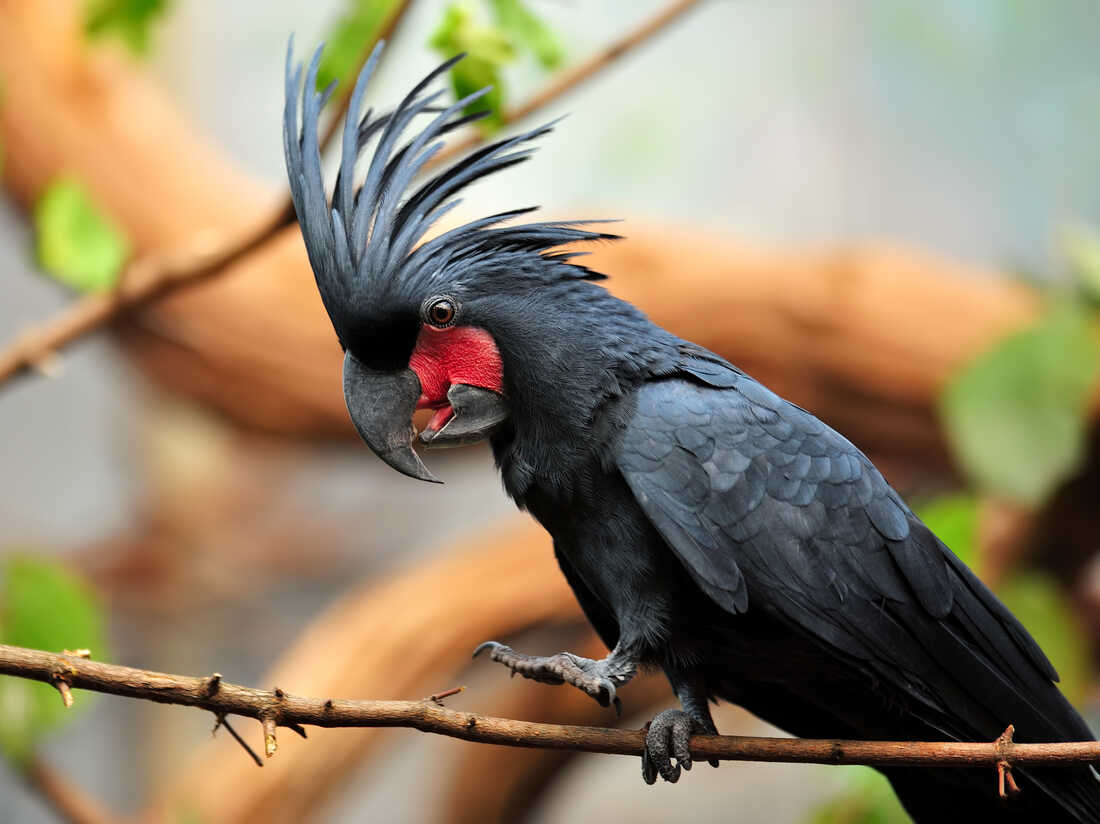To woo a cockatoo, scientists find having your own drumsticks and rhythm is key
By Regina G. Barber|Maria Godoy|Rachel Carlson
Scientists have long known cockatoos have rich social lives. But it turns out, those lives are particularly complex — and musically creative — when it comes to courtship.
In a in the researchers found that male palm cockatoos, a type of parrot, fashion their own unique drumsticks as part of their efforts to woo a potential mate.
Wild palm cockatoos live in remote parts of far northern Australia, lowland New Guinea and some offshore islands. Females lay just a single egg every two years. Given this, the females are pretty picky about which male they mate with, says , a conservation biologist at Australian National University and senior author of the study.
Enter the spectacle that is the male palm cockatoo mating display.
The display begins with a string of whistles and calls and a stiffening of the crest on the male's head. "He's blushing his red cheeks and he's bobbing and dancing on the branch, twirling — doing everything he can to get her attention," says , who has spent decades studying the birds in the wild. For the big finale, the males perform a drum solo using a freshly fashioned drumstick.
Credit: Heinsohn, Zdenek, Appleby and Endler, 2023
The birds will walk out on a tree limb and pluck a branch, then use their bills to shape it into a drumstick, all in real-time, as part of the mating display. Heinsohn suspects the males do this to show off their strength to potential mates. He and his colleagues found that each male has a preferred style of drumstick — ranging from the long and skinny to short and stubby. Some even use seed pods.
"They're the only bird that actually makes a sound tool or a musical instrument for the purposes of display," Heinsohn says.
He says that individual males also seem to each have a signature drumming style that other birds can recognize. He suspects male palm cockatoos come up with their own distinctive sound in an attempt to signal both brains and creativity to their potential mates. "It's a bit like humans selecting each other for intelligence. It seems to be very important to the females that they have this creative element," he says.
, an assistant professor of biological sciences at the University of Cincinnati, says the research "provides important new data on tool construction and use" in cockatoos. Hobson studies sociality, behavior and cognition in birds and was not involved in the current study.She says it's extremely difficult to get good data on complex behaviors in parrots in the wild, "so it's really exciting that these tool behaviors were so carefully documented in a wild population. And I think it makes it more likely that these behaviors are really serving a real biological purpose, rather than being something like an artifact of captivity."
—



